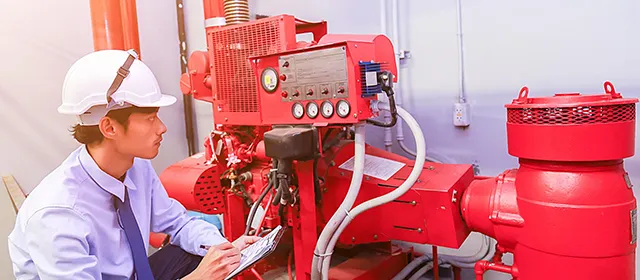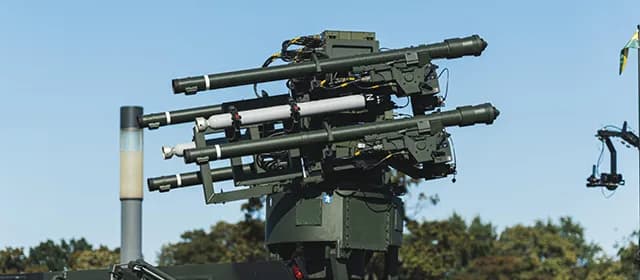Fire pump control systems constitute a critical part of building safety infrastructure. These systems must operate reliably during emergencies, passing performance tests and activating under pressure. Traditional maintenance schedules depend on periodic inspection and reactive servicing. Advances in predictive maintenance and AI diagnostics now allow early detection of potential failures and continuous condition monitoring. This transformation promises higher reliability, lower costs, and improved safety.
Kings Research estimates that the global fire pump controllers market size was recorded at USD 1,350.4 million in 2024 and projected to reach USD 1,991.8 million by 2031, growing at a CAGR of 5.71% from 2024 to 2031. This blog explores how AI-driven diagnostics enhance fire pump control systems, describes enabling technologies, explores practical implementations and challenges, and envisions future evolution in this domain.
The Importance of Fire Pump Control Systems
Fire pump systems supply water under pressure to sprinkler and standpipe networks. Control systems regulate pump operation, monitor pressure, motor status, supply flow, and alarms, and interface with supervisory control systems. In many jurisdictions, fire safety codes (for example, NFPA 20) and fire protection standards require periodic inspection, testing, and maintenance to ensure readiness. The National Fire Protection Association recently published a survey highlighting increasing interest in AI adoption and training trends in fire protection trades.
Reliability is paramount. Failures might occur due to motor degradation, impeller wear, seal leaks, valve faults, or sensor drift. Predictive diagnostics help avoid latent failures that become critical at emergency demand.
Key technologies and methods driving AI diagnostics in fire pump systems
- Sensor Networks and Data Acquisition: Digital sensors measure pump inlet/outlet pressure, flow, motor current, vibration, temperature, and supply parameters. Modern fire pump controllers increasingly embed diagnostic functions. For instance, Armstrong introduced a “Fire Manager” cloud service that captures municipal supply pressure, pump operation data, and performance trends, issuing early diagnostic alerts.
- AI and Machine Learning Diagnostics: Machine learning (ML) models train on historical sensor data labeled by failure modes or performance anomalies. These models detect deviations from normal baselines, flag early warning states, classify fault types, and estimate remaining useful life (RUL). A recent study applied AI diagnostics to pump systems in industrial settings; algorithms such as Random Forest and XGBoost distinguished normal, warning, and critical states based on parameters such as vibration, pressure, flow, temperature, and current (Source: arxiv.org).
- Short-horizon forecasting models enable prediction ahead of time, 5, 15, or 30 minutes forecast using sliding window statistical features. One such method achieved meaningful recall in early warning predictions using pump time-series data. In edge architectures, real-time monitoring and decision-making become feasible. Similar work in valve diagnostics (PreMa) illustrates localized edge inference to detect solenoid faults and estimate RUL.
- Integration with Control Logic and Alerts: Diagnostic insight must tie into pump control logic and facility workflows. When an AI model triggers a warning, the control system may issue alerts, escalate to maintenance teams, or shift into safe fallback modes (e.g., redundant pump activation). The system must classify fault priority and isolate false positives. In June 2025, Johnson Controls relaunched its “Connected Sprinkler” service to deliver real-time insights and predictive maintenance across fire safety hardware (Source: www.johnsoncontrols.com).
Benefits of Predictive Diagnostics in Fire Pump Systems
- Improved Reliability and Safety: Early diagnosis of degradation or anomalies prevents unexpected failures during fire events. Monitoring of motor health, cavitation, flow anomalies, or sensor drift ensures that pumps respond when demanded.
- Optimized Maintenance Costs: Maintenance spends shift from time-based schedules to condition-based strategies, reducing unnecessary inspections and uncovering issues before they become costly repairs. Predictive alerts enable planned downtime rather than reactive emergency fixes.
- Performance Assurance and Code Compliance: Diagnostic systems provide audit trails, logs, and performance records that support compliance with inspection and testing standards. Facilities can document pump health history, test outcomes, and maintenance interventions more transparently.
- Operational Insights and Lifecycle Extension: Analysis of performance trends provides insight into systemic issues such as fluctuating supply pressure, water quality effects, or recurring fault modes. This enables design improvements, component selection, or system upgrades.
Challenges and risks in implementing AI diagnostics for fire pump control
- Data Quality and Label Scarcity: AI models require high-quality, labeled datasets representing normal and fault modes. Fire pump failures are rare, so labels are scarce. Synthetic fault injection or domain-adaptation may help, but it introduces risks. Performance in rare anomalies is critical yet hard to validate.
- False Positives and Model Explainability: Overly sensitive models may trigger false alarms, undermining trust. Diagnostic systems must balance sensitivity and specificity. Explainable AI, fault rationale, and threshold management are essential to user acceptance.
- Interfacing with Safety-Critical Systems: Fire pump systems operate under life-safety frameworks. Diagnostic systems must be fail-safe, deterministic, auditable, and permitted by standards authorities. Integration must preserve safety margins and operate under fallback conditions if diagnostics fail or connectivity is lost.
- Retrofitting Legacy Systems: Many facilities use legacy pump controllers and analog systems. Upgrading to sensor-rich, AI-diagnostic architectures may require hardware retrofits, communications upgrades, and system requalification.
- Cybersecurity and Data Integrity: AI diagnostic systems and telemetry links expand attack surfaces. Unauthorized control, data spoofing, or denial-of-service may compromise pump systems. Secure communication, authentication, encryption, intrusion detection, and isolation are mandatory.
- Regulatory and Standards Gaps: Fire safety codes and standards (NFPA, UL) were not written assuming AI diagnostics. Approval or acceptance of predictive systems in formal safety certification may lag. Alignment with building codes, insurance regimes, and authority having jurisdiction (AHJ) requires demonstration of reliability and safety.
Path Forward and Implementation Strategy
Facilities seeking to adopt predictive diagnostics should begin with pilot deployment. A single pump or controller can serve as a testbed. This deployment helps validate sensor placements, data pipelines, model performance, and false alarm handling. Sensor retrofits on pressure, flow, motor current, vibration, and temperature should align with signal fidelity requirements. Calibration, data sampling, and signal preprocessing pipelines must ensure consistent, quality input.
Model development should combine physics-informed thresholds and ML models. Hybrid models incorporating engineering rules improve robustness and interpretability. Domain-aware anomaly detection and thresholding help filter spurious signals. Edge inference deployment enables low-latency diagnostics. Cloud platforms support model training, aggregation, and fleet-level insights. Update distribution, model lifecycle management, and fallback control modes must be rigorously engineered.
Diagnostic systems must integrate with facility asset management, maintenance scheduling, alarm systems, and BMS (Building Management Systems). Alerts should categorize priority and integrate dispatch workflows. Validation under test conditions and fault injection exercises ensures system robustness. Diagnostics must prove capability under degraded sensor, communication, or environmental conditions. This supports acceptance by AHJs, insurers, and safety stakeholders.
Ongoing monitoring of diagnostic performance, false alarms, and missed faults is necessary. Feedback must refine models over time. Governance tools should track model drift, retraining triggers, and version control. Stakeholder alignment with fire safety authorities, regulatory bodies, building owners, and insurance providers helps establish trust. Presenting reliability data, safety margins, and fallback performance can ease acceptance and approval.
Future Trends and Emerging Opportunities
AI diagnostics may evolve to self-healing pump systems that autonomously adjust performance parameters or engage redundant paths. As the fitness of components degrades, the system may modulate pump duty cycles or alert for preemptive substitution. Integration with digital twins allows simulation of pump responses, fault scenarios, and optimized preventive schedules. Diagnostic feedback may refine the digital twin for continual improvement.
Cross-system diagnostics may emerge, correlating pump health with sprinkler networks, supply water quality, building hydraulics, and system demand profiles to detect systemic anomalies beyond pump components. Federated learning may enable model improvement across facilities while preserving data privacy. This allows multiple sites to contribute to learning without sharing raw data.
Regulators and standards bodies may evolve codes to explicitly allow AI diagnostics and predictive maintenance within fire protection systems. Certification regimes, adoption of safety integrity levels, and audit frameworks will mature. As AI and diagnostics integrate deeper into fire systems, they may enable adaptive maintenance contracts, as-a-service models, or insurance linkage offering premium discounts for systems that demonstrably maintain health via diagnostics.
Conclusion
Predictive maintenance and AI diagnostics represent a paradigm shift in fire pump control systems. These technologies extend visibility beyond periodic inspections to real-time health monitoring, fault anticipation, and performance optimization. Enabling elements include sensor networks, machine learning models, edge inference, and control logic integration. Commercial systems like Armstrong Fire Manager and trends in smart fire protection confirm momentum.
Challenges include data scarcity, integration with safety systems, cybersecurity, regulatory acceptance, and retrofits. A phased implementation, rigorous validation, and alignment with safety stakeholders constitute best practice. As adoption grows, fully self-diagnosing and adaptive fire pump systems may emerge, elevating fire protection reliability, reducing maintenance costs, and improving safety readiness.




